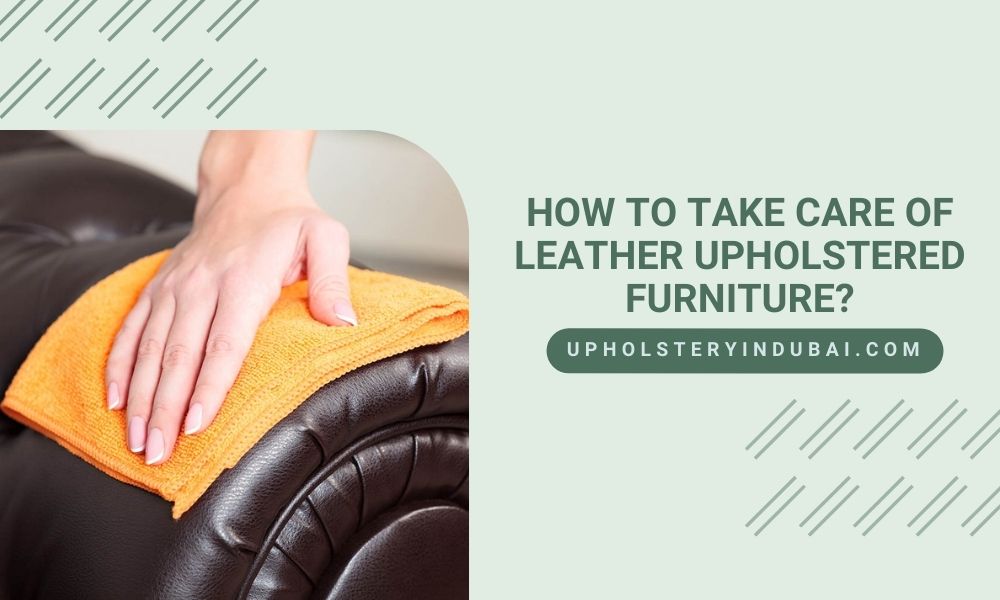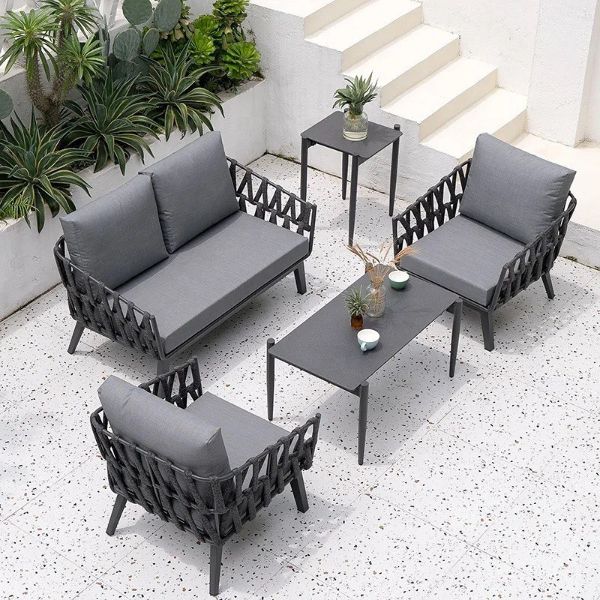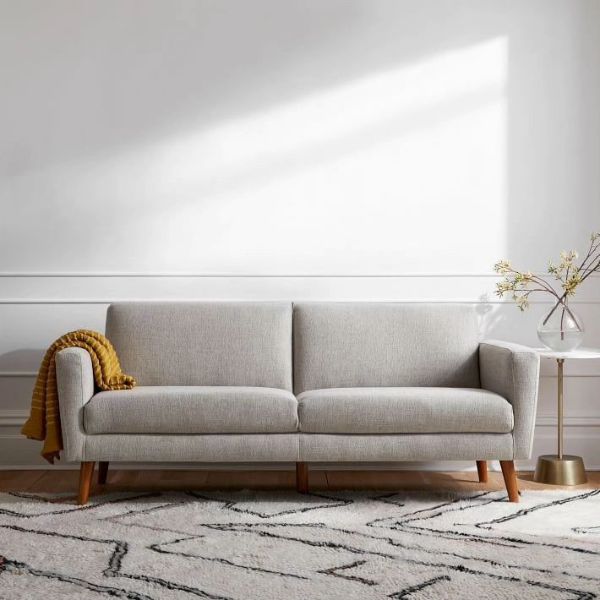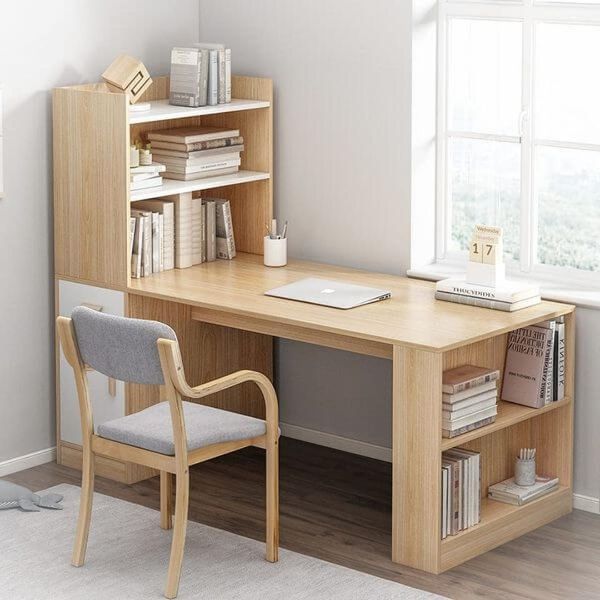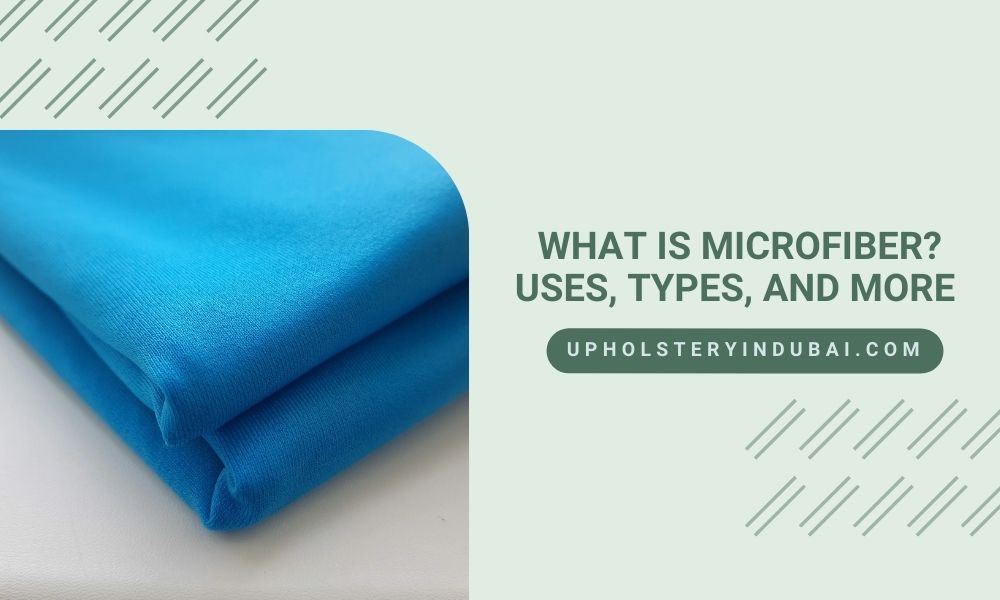
Microfiber is an amazing and adaptable synthetic material that has become extremely popular, due to its great qualities and broad range of uses. The common task of cleaning and fashion have both been transformed by ultrafine fabric, which is made of finely woven fibers.
Often thinner than the diameter of human hair, microfiber is a term used to describe a synthetic textile substance. These fibers are often created by combining polyester and polyamide (Nylon) and weaving or knitting them together to create a soft and enduring fabric.
We shall explore the composition, applications, types, and advantages of synthetic fibers in this comprehensive article by upholstery in Dubai.
Composition And Manufacturing Of Synthetic Microfiber
Extruding synthetic polymers into thin filaments is a crucial step in the production of microfiber. Then, using mechanical or chemical methods, these filaments are divided into incredibly thin fibers. The generated fine-fiber materials have an exceptionally high surface area and operate exceptionally well.
Key Properties Of Microfiber
-
Softness
Because of its fine fibers, microfiber has a velvety, silky touch that is pleasant on skin and surfaces.
-
Absorbency
Due to its large surface area, soft fiber is very absorbent, making it perfect for cleaning activities.
-
Electrostatic Attraction
Microfiber effectively traps dust, grime, and other particles because of fibers’ innate electrostatic charge.
-
Strength
Thin fiber has a delicate feel, but it is sturdy and resilient, able to resist frequent use and washing.
-
Quick-Drying
Due to the composition of ultra-fine fiber, it dries fast, lowering the possibility of mold and bacterial growth.
-
Lint-Free
The fine weave of microfiber ensures streak-free cleaning by reducing lint production.
-
Hypoallergenic
Microfiber’s thick texture prevents allergies and dust mites from gathering.
Uses Of Microfiber In Different Fields
Due to its adaptability, ultra-soft filament is now used in many different fields and applications:
-
Cleaning
The use of excessive cleaning supplies is decreased by the effective filth, dust, and grime removal provided by microfiber cloths and mops.
-
Personal Care
The skin-friendly texture of gentle microfiber towels, which absorb moisture after showers or swims, make them appealing.
-
Automotive
For automotive detailing, lint-free offers streak-free cleaning and polishing.
-
Sports Apparel
Sports apparel made of microfibers wicks away perspiration, improving comfort while exercising.
-
Fashion
Because of its softness and breathability, microfiber is a popular fabric for athletics, hosiery, and undergarments.
-
Home Textiles
Microfibers, used for curtains and upholstery, are enduring and stylish.
-
Electronics Cleaning
The lint-free nature of microfiber and its gentleness make it perfect for cleaning fragile screens and surfaces.
-
Furniture
Microfiber upholstery is trendy and long-lasting, and it does not easily get dirty or worn out.
-
Medical Settings
Medical fibers and wipes benefit from the hypoallergenic properties of microfiber.
-
Travel
Microfiber towels that dry quickly and are small are important for travel.
Different Types Of Microfibers
-
Split Microfiber
Split fibers were used in the engineering to increase surface area for better absorption and cleaning ability. Ideal for cleaning homes and detailing cars.
-
Circular Knit Microfiber
It is frequently used in sportswear and activities because of its flexibility and stretch, which promotes comfort and ease of movement.
-
Woven Microfiber
Due to its longevity, it finds use in home textiles including upholstery, curtains, and bedding, and has a typical woven feel.
-
Non-Woven Microfiber
Due to its low cost and adaptability, it is produced using techniques like heat bonding and is used in disposable cleaning wipes and medical textiles.
-
Suede Microfiber
It is used to clean delicate surfaces such as eyeglasses and camera lenses and is recognized for having a suede-like feel.
-
Terry Microfiber
With its looping fibers, it is well known for soft, absorbent towels and bathrobes that dry quickly.
-
Brushed Microfiber
Due to its warmth and smoothness, it is a favorite for bedding. Mechanical processing creates a brushed feel.
-
Microfiber Leather
It’s a synthetic leather substitute used in upholstery and accessories that offers durability and a fashionable look.
-
Microfiber Suede
Since of its softness and opulent appearance, it is used in upholstery, footwear, and clothes since it resembles natural suede.
-
Microfiber Fleece
Due to its insulating qualities and reputation for warmth and tenderness, it is utilized in blankets, coats, and winter wear.
Advantages Of Microfiber
-
Superior Absorbency
Microfiber is a particularly effective material for drying out spills since it can absorb liquids up to several times its weight.
-
Enhanced Cleaning Power
Even minuscule dirt particles are captured by its thin fiber, which penetrates crevices.
-
Durability
Because of its sturdy constructions, microfiber can tolerate many washings and use without losing its effectiveness.
-
Hypoallergenic Properties
It is suitable for those who are sensitive because of its tightly woven fibers, which prevent the growth of microorganisms and allergies.
Care And Maintenance
-
Washing Microfiber
To avoid abrasion, wash microfiber goods separately from lint-producing materials. To preserve their quality, wash them in cold or warm water with moderate detergent.
-
Drying Microfiber
To avoid harming the fibers with high heat, air drying is preferred. When drying clothes, use the low-heat setting.
Environmental Considerations
Although microfiber has many advantages, there are worries about how it will affect the environment. Washing microfibers can cause microplastic pollution in aquatic environments. Use laundry bags or filters that capture microfibers to lessen the impact of this.
Winding Up
Because of its exceptional qualities and myriad uses, microfiber is widely used in both businesses and homes. Ultra-thin fiber keeps playing a crucial role in our daily lives, from effective cleaning to cozy apparel. We may make use of soft texture fiber’s benefits while keeping an eye on its effects on the environment by being aware of its types, uses, and maintenance instructions.




